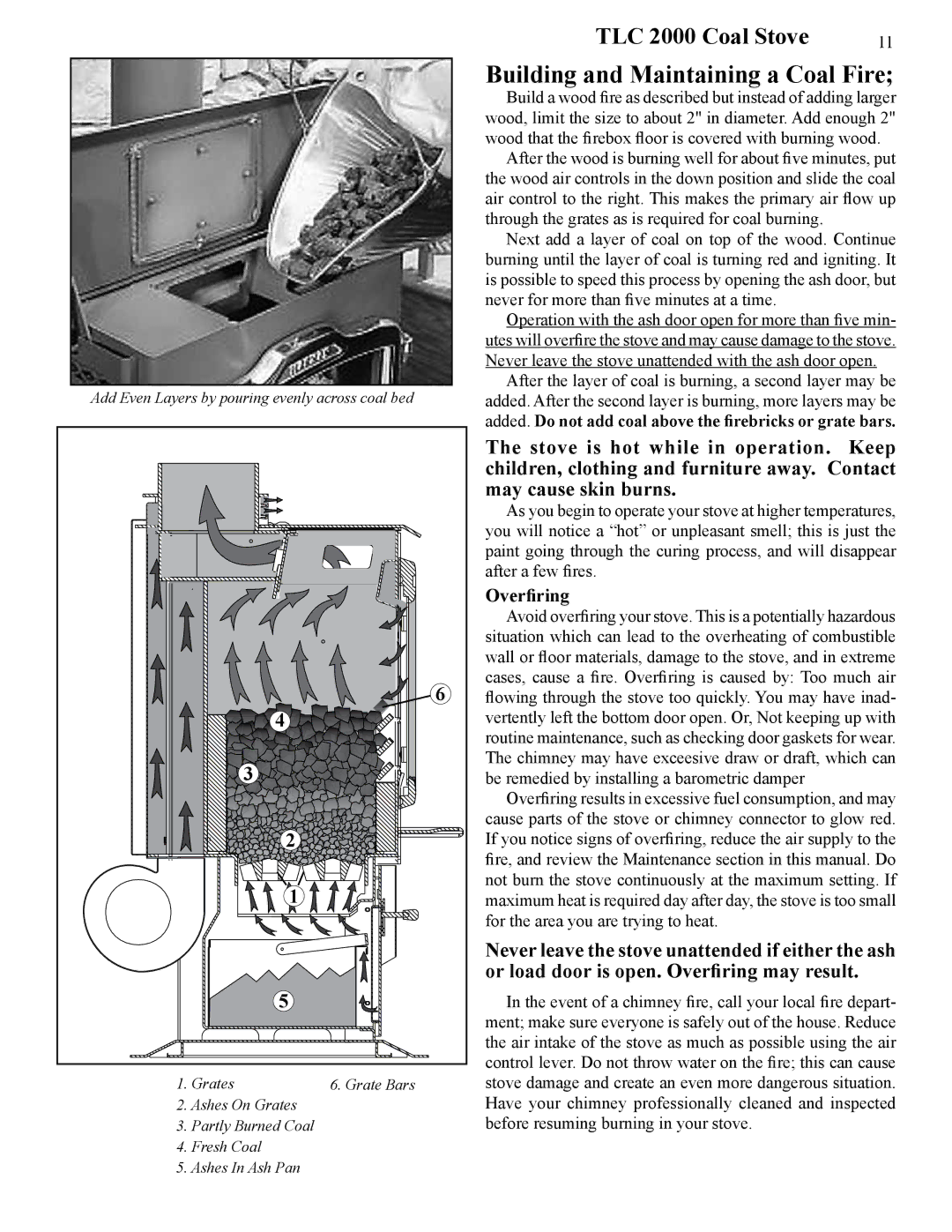
Add Even Layers by pouring evenly across coal bed
6 |
4 |
3 |
2 |
1 |
5 |
1. Grates | 6. Grate Bars |
2.Ashes On Grates
3.Partly Burned Coal
4.Fresh Coal
5.Ashes In Ash Pan
TLC 2000 Coal Stove | 11 |
Building and Maintaining a Coal Fire;
Build a wood fire as described but instead of adding larger wood, limit the size to about 2" in diameter. Add enough 2" wood that the firebox floor is covered with burning wood.
After the wood is burning well for about five minutes, put the wood air controls in the down position and slide the coal air control to the right. This makes the primary air flow up through the grates as is required for coal burning.
Next add a layer of coal on top of the wood. Continue burning until the layer of coal is turning red and igniting. It is possible to speed this process by opening the ash door, but never for more than five minutes at a time.
Operation with the ash door open for more than five min- utes will overfire the stove and may cause damage to the stove. Never leave the stove unattended with the ash door open.
After the layer of coal is burning, a second layer may be added. After the second layer is burning, more layers may be added. Do not add coal above the firebricks or grate bars.
The stove is hot while in operation. Keep children, clothing and furniture away. Contact may cause skin burns.
As you begin to operate your stove at higher temperatures, you will notice a “hot” or unpleasant smell; this is just the paint going through the curing process, and will disappear after a few fires.
Overfiring
Avoid overfiring your stove. This is a potentially hazardous situation which can lead to the overheating of combustible wall or floor materials, damage to the stove, and in extreme cases, cause a fire. Overfiring is caused by: Too much air flowing through the stove too quickly. You may have inad- vertently left the bottom door open. Or, Not keeping up with routine maintenance, such as checking door gaskets for wear. The chimney may have exceesive draw or draft, which can be remedied by installing a barometric damper
Overfiring results in excessive fuel consumption, and may cause parts of the stove or chimney connector to glow red. If you notice signs of overfiring, reduce the air supply to the fire, and review the Maintenance section in this manual. Do not burn the stove continuously at the maximum setting. If maximum heat is required day after day, the stove is too small for the area you are trying to heat.
Never leave the stove unattended if either the ash or load door is open. Overfiring may result.
In the event of a chimney fire, call your local fire depart- ment; make sure everyone is safely out of the house. Reduce the air intake of the stove as much as possible using the air control lever. Do not throw water on the fire; this can cause stove damage and create an even more dangerous situation. Have your chimney professionally cleaned and inspected before resuming burning in your stove.
